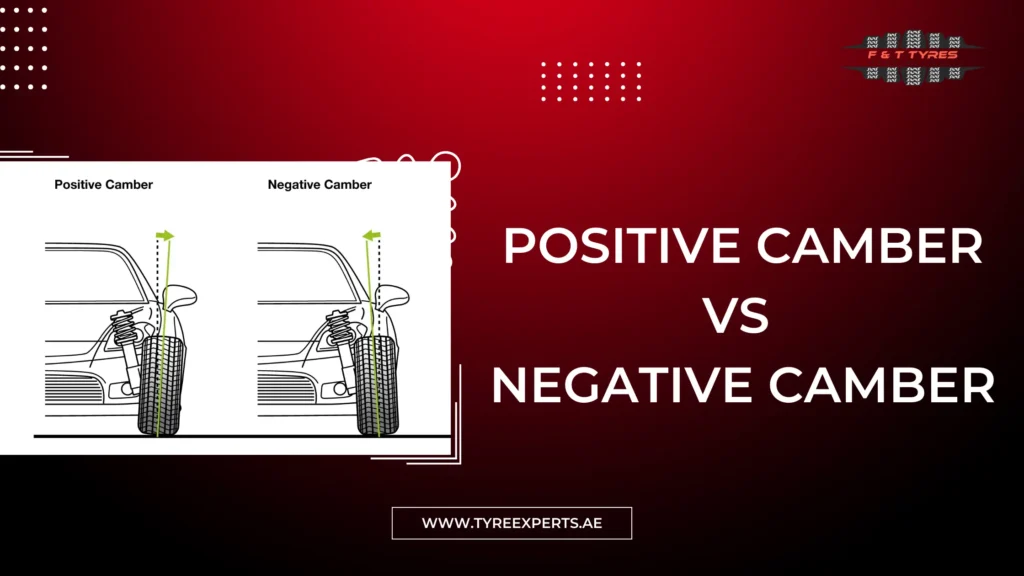When it comes to vehicle handling and performance, the alignment of your wheels plays a crucial role. One of the key aspects of wheel alignment is camber, which refers to the angle of the wheels relative to the vertical axis when viewed from the front or rear of the vehicle. In this comprehensive guide, we explore the differences between positive camber and negative camber, their effects on driving dynamics, and which one might be more suitable for your driving style.
Understanding Camber
Camber angle is defined as the tilt of the wheel from the vertical axis, measured in degrees. It can be either positive, negative, or zero:
- Positive Camber: When the top of the wheel tilts outward from the vehicle. This type of camber is often seen in vehicles designed for heavy loads or off-road conditions, as it provides better stability and prevents excessive wear on the outer edge of the tire.
- Negative Camber: When the top of the wheel tilts inward towards the vehicle. Negative camber is common in performance-oriented vehicles and racing cars because it enhances cornering grip and improves handling by keeping more of the tire tread in contact with the road during turns.
Effects On Vehicle Handling
Positive Camber Effects
Positive camber affects vehicle handling in several ways:
- Stability: Vehicles with positive camber tend to have better stability, especially at higher speeds and when carrying heavy loads. The upright position of the wheels helps in maintaining straight-line stability on highways and rough terrains.
- Tire Wear: While a positive camber improves stability, it can lead to uneven tire wear. The outer edge of the tire wears out faster due to the outward tilt, necessitating regular tire rotations and alignments to ensure even wear.
Negative Camber Effects
Negative camber influences vehicle dynamics differently:
- Cornering Performance: Vehicles with negative camber exhibit improved cornering performance. By tilting the top of the wheels inward, more of the tire’s contact patch remains on the road surface during cornering, enhancing grip and reducing the risk of understeer.
- Straight-Line Stability: However, excessive negative camber can compromise straight-line stability and may lead to increased road noise and tire wear on the inner edges.
Which Camber Angle Is Right For You?
Choosing between positive camber and negative camber depends largely on your driving needs and preferences:
- Daily Driving: For everyday commuting and regular driving conditions, a slight negative camber can enhance cornering performance without significant drawbacks in straight-line stability.
- Off-Road and Heavy Loads: Vehicles that frequently carry heavy loads or traverse rough terrain may benefit from a slight positive camber to improve stability and prevent premature tire wear.
- Performance Driving: Enthusiasts and sports car drivers often prefer negative camber for its superior cornering capabilities and enhanced handling characteristics during spirited driving.
Conclusion
In conclusion, understanding the impact of positive camber versus negative camber on driving dynamics is crucial for optimizing your vehicle’s performance and safety. Whether you prioritize stability, cornering grip, or a balance of both, choosing the right camber angle can significantly enhance your driving experience. Consult with a qualified technician or alignment specialist to determine the optimal camber settings based on your vehicle type and driving habits.
By incorporating proper wheel alignment techniques and regularly monitoring tire wear, you can maximize the lifespan of your tires and enjoy improved handling characteristics tailored to your specific driving needs.
Frequently Asked Questions
Is Positive Or Negative Camber Better?
The preference between positive and negative camber depends on the intended use of the vehicle. Positive camber provides better stability, especially under heavy loads and on rough terrains. Negative camber enhances cornering grip and handling performance, making it preferable for performance-oriented driving.
Which Camber Is Better?
There is no definitive answer as to which camber is universally better. Positive camber is suitable for stability and load-bearing applications, while negative camber excels in enhancing cornering performance and handling dynamics.
What Are The Disadvantages Of Positive Camber?
The disadvantages of positive camber include:
- Uneven Tire Wear: It causes faster wear on the outer edges of tires.
- Reduced Cornering Capability: Compared to a negative camber, a positive camber can diminish cornering grip and performance.
- Potential Stability Issues: Excessive positive camber can compromise straight-line stability and may lead to increased road noise.
What Would Cause Positive Camber?
Positive camber can be caused by several factors:
- Suspension misalignment or wear.
- Improper installation of suspension components.
- Carrying heavy loads without adjusting suspension settings.
- In some cases, vehicle design and intended use may also contribute to positive camber settings.
What Camber Is Best For Acceleration?
For acceleration, a slight negative camber is generally preferred. Negative camber helps to maximize the contact patch of the tire with the road during acceleration, improving traction and reducing wheel spin.
What Camber Is Best For Handling?
A negative camber is typically better for handling. It enhances cornering performance by keeping more of the tire tread in contact with the road during turns, thereby improving grip and reducing the risk of understeer.



